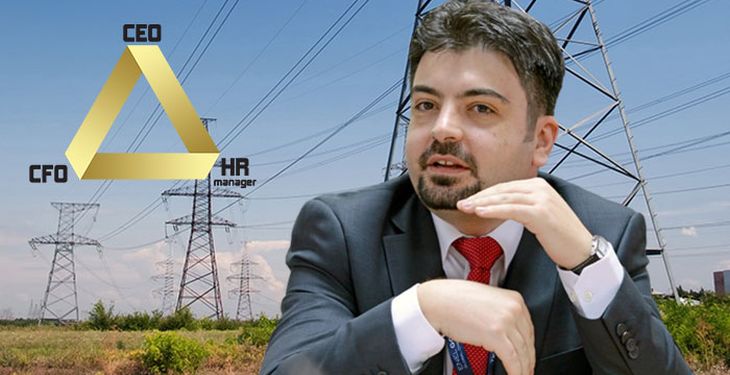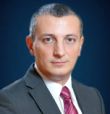Part of its editorial project “Professional performance”, energynomics.ro publish the answers from some of the largest companies in the Romanian energy industry to a set of questions to be considered an exploration into the business benefits of a good relationship between the CEO, CFO and HR manager, the so-called “golden triangle” of any successful organization.
On behalf of Enel România, we spoke with Mr. Florin Tătaru, Head of Human Resources at Enel România.
What is the structure of the personnel within your company? It is the best? Is it in line with the situation in other companies in the sector?
Traditionally, the energy sector has been a relatively closed system, less sensitive to market oscillations; it is rather characterized by very long-term careers. This has created stability, on one hand, and retention of specific competences, on the other hand, but it has also generated some of the difficulties we are facing today. More specifically, the extremely small fluctuation failed to generate a healthy flow of refreshed skills, abilities etc. Thus, there are areas of activity where internal systems have failed to keep pace with the evolution of technology, customer requirements etc; on the other hand, this led to a higher average age, a “gap” between generations that makes it difficult to ensure normal continuity both at management levels and at the levels of specialists and workers.
We have been concerned about this issue ever since we took over the 3 network areas and, with the market changes (market liberalization, changing technology, etc.), through the infusion of new specialists, with a significantly lower average age, and formed in dynamic industries, the average age is decreasing, reaching 45 years. As you can see, it is still high, and we continue to work hard in this direction. Clearly, due to the nature of our activity, we have a population in which graduates of technical studies have an important share. Over the years we have developed collaborations with technical universities in the large cities in which we operate (Bucharest, Timisoara, Constanta etc.) and we managed to attract top candidates (i.e. we have hired many valedictorians from energy faculties). In the last two years we have recruited more than 200 engineers in their early career and, although the volume in the coming years will not be as high, the refreshment of the personnel will be a constant in our policies. We have also developed partnerships with energy high schools across the country to ensure an influx of young employees in the workers area as well.
As far as the share of employees with higher education is concerned, the company is in full transformation. In 2009 the percentage of employees with higher education was 39% while, according to our estimates, it will reach at least 55% in 2016. Equally important, though, is that these employees’ profile is radically changing. We are currently witnessing a silent revolution, which completely changes the mode so far, going slowly in the age of digitization. Technological development is what changes society, habits, and transforms jobs. With digitization, the changes have begun to be felt in this field as well. Thus, in a few years we will need to fill positions for which there is no specialization at this moment, changing completely the way of working with the network. Therefore, difficult-to-find specialists should be prepared starting now.
Like in most technical areas, there’s a higher proportion of men (74%), but the distribution varies depending on the areas of activity. For example, the work of an electrician is physically demanding and, as such, the proportion of men in these positions is overwhelming. On the other hand, in the areas of customer service, support services etc. the distribution is more balanced, women have majority. We are working to ensure that there are equal opportunities regardless of gender, age etc. Actually, Enel has a strong commitment in this area; it is one of the few companies in the sector with a woman as President of the company (globally).
How would you describe personnel movements within your company in the past (3-5) years? Ample or rather low? Why?
Past years have been years in which we have balanced the need for new skills with the need to continue streamlining processes and operations. Also, there was a need to clarify the list of activities on which we need to focus internal resources and to clarify activities for which we want to establish partnerships. It has been an intense effort that has led to a gradual decrease in the number of employees, while we have achieved efficiency through the introduction of technology, processes repositioning etc. On the other hand, increasing internal dynamics of the company, lowering average age etc. have brought a slight increase in the number of voluntarily leaves, which are still at a low level. Our ongoing concern is firstly to maintain rare critical skills, and through the various retention programs we believe we have achieved our goal.
Do you expect significant changes in the near future? Are they desired / planned or imposed by independent factors?
Periods of significant repositioning have passed and we are now working on small adjustments, so as to balance the level of allocated resources. Surely we will continue to pursue efficiency increase, but combined with the effort to rejuvenate teams, we estimate that there will not be significant developments in the number of staff in the near future. As we said, we expect to have changes in composition, as we introduce new technologies, market competitiveness increases etc.
What are the main instruments for attraction / retention – reward employees who are the most wanted? Are they mainly financial or non-financial?
It is known that most of the leaves in a company are caused by how these people are led by their managers, and no by the financial package (surely, we exclude extreme cases). Therefore, every two years we monitor the level of “engagement” and each manager has the responsibility to develop action plans that address the areas where results are not in accordance with company standards. After a year we conduct a survey to check the status of the actions, to see if they have the desired effects, etc. It is an important element of our retention strategy.
Speaking about a more concrete plan, the company has much to offer through the sector’s attractiveness and especially through the multiple projects we are involved in. As previously mentioned, there are major changes in technology, and in the way of working with customers, efforts to redesign processes and change management that you hardly find in other companies, which is professionally attractive for anyone who wants a career in the field.
The financial part is rather a hygiene factor; it does not necessarily increase motivation, but ensures comfort necessary to focus on business goals. Therefore it will always remain important. Enel Romania develops numerous internal programs to motivate employees, both financial and non-financial. An example is the “Enel pentru tine” program, which aims to redefine the status of Enel team member. The program is intended for all employees and their families and provides benefits available in the main geographical areas where the company operates. The program covers four major areas: health care, financial services, packages for sports activities, partnerships on areas of interest (i.e. discount for book purchases). Beyond this program, which is relatively new, we have rewards with a longer history within the company: holiday bonus, bonus for the jubilee, additional days of leave, etc.
Do you use opportunities offered by pension funds (compulsory – Pillar II, optional – Pillar III) for motivating employees? In what way?
This year we have carefully considered opportunities of using Pillar III. We had a first discussion with the social partners. We will continue consultations, but we do not expect to make a decision before the end of the year.
What do you find more difficult – to recruit young staff (trained but inexperienced) or specialists (over 35, with experience)? Why?
Over recent years we have managed to recruit highly qualified young colleagues. We work with polytechnic universities and we have used internships to identify the most suitable candidates. It was not easy, but, as I said, I think we found top candidates. Due to the specific of the industry, many of the positions in our distribution structures are niche positions. As such, we primarily recruit fresh graduates and maximum 3-5 years of experience and then develop them inside. In Sales & Marketing and support functions we recruit both categories. We encounter difficulties in the IT area, for example, which is quite common in the market in Romania.
What would you say is the main role of a HR manager in relation to the CEO and CFO?
This discussion of involving / not involving the HR Director in making business decisions has been going on for some time now. I think things are simple: HR must understand how that business works in order to come up with viable solutions; HR must be able to measure the impact of proposed measures in order to have a real discussion with the two. In addition, I think the HR manager must be both coach and challenger for the managers on issues of people management, team building etc.
This interview was realized in August 2015.
Another interview in this series, can be found here:
Laura Constantin (Nuclearelectrica): Recruitment of experienced staff is relatively difficult

